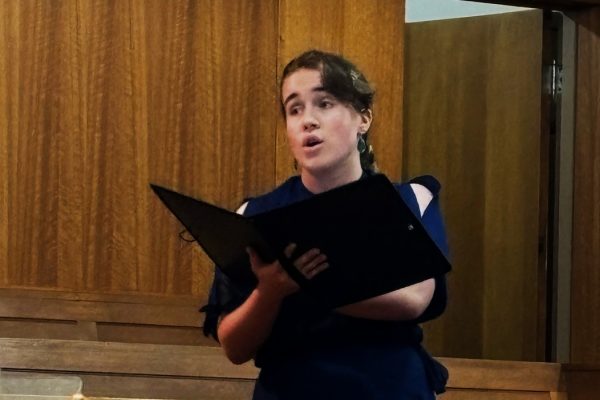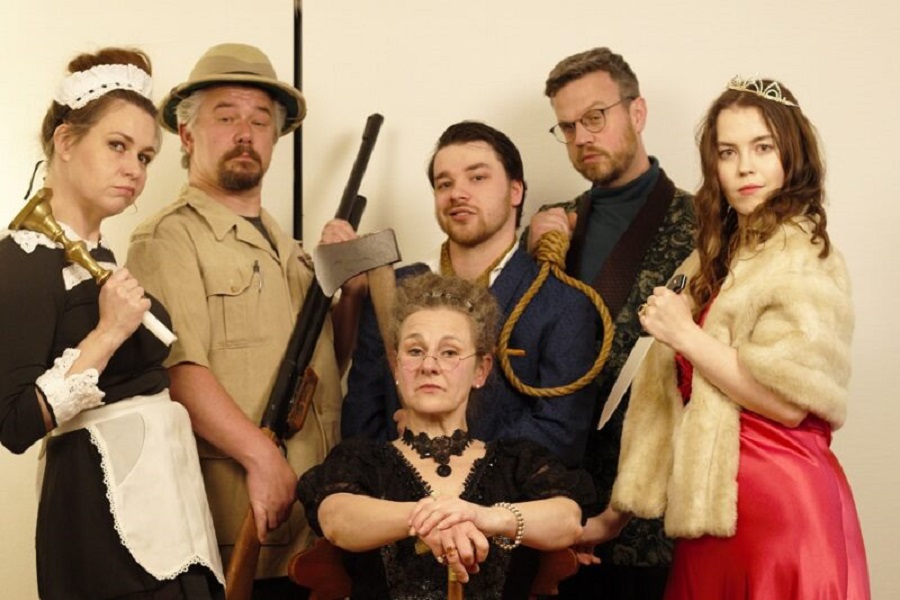
For M Is Musick, the Llewellyn Choir. At Wesley Uniting Church, April 5. Reviewed by HELEN MUSA.
With Rowan Harvey-Martin at the helm, the Llewellyn Choir presented an enjoyable, varied concert of Easter-related music last night under the slightly strange-sounding (grammatically) title, For M Is Musick.
That, it turns out, was taken from the central piece, Benjamin Britten’s Rejoice in the Lamb, and is dedicated to the idea that all things prove the presence of God.
Chatting affably with the audience, Harvey-Martin described the event as “An Easter concert – but not,” since Easter was over.
The sense that the Llewellyn Choir members were all singing for sheer pleasure permeated this cleverly-planned concert, with a brass ensemble led by trumpeter Zach Raffan providing a different dimension from the mezzanine stalls and opening the concert with Funeral March music from Henry Purcell’s Music for the Funeral of Queen Mary.
A hesitant vocal entry into Purcell’s elaborate phrasing gave way to a more assertive performance of the anthem, with the words word “Yet, O Lord, Oh Lord Most Mighty” emerging strong and clear before the brass musicians brought the Purcell to a powerful conclusion in the Canzona.

There followed the Britten, described by Harvey-Martin as “very very quirky.” Here pianist-turned-organist Anthony Smith brought an unexpected note of Swing to the church, soprano soloist Elsa Huber got the lioness’s share as she sang with perfect articulation the famous words of eccentric 18th century academic Christopher Smart dedicated to his cat, “Jeoffrey” (yes, that how’s it’s spelt). Here Smart famously proposes that his cat and all creatures indeed show the power of the Almighty.
Through this entire piece, which also include solo performances from choir members Laura Ford, Sally Wodzinski, Peter Ellis and David Cornforth, it was obvious that the Llewellyn Choir were having a thoroughly good time, evident from the animation of their voices as they performed the silly-sounding but wise lyrics wile replicating the sounds of chimes and rhymes, before a more formal Hallelujah.
Harvey Martin turned to us again to introduce us to Non Nobis, Domine, by American composer Dan Forrest, revealing that this work, composed specifically by Forrest to be performed at the close of concerts, could be used “for anything, in any combination, anywhere you like.”

After taking a few moments for the presentation of bouquets to the surprised brass ensemble, the program changed tone with their purely instrumental performance of Ballet I and Danse Des Bacchanales by 16th century German composer, Michael Praetorius. More devotional than Bacchanalian in mood, they came from the composer’s compendium of more than 300 instrumental dances.
The choir then launched into Leonard Bernstein’s Missa Brevis, with Huber easily gliding in and out vocally. While the central Sanctus and Benedictus were sung with gusto, it was evident here that the choir was simply not large enough to give Bernstein’s music the treatment needed.
This entertaining concert turned specifically to Easter with John Rutter’s tuneful hymn of praise, Most Glorious Lord of Life, originally sung by the Harvard University Choir in Easter, 2010.
This was well-suited to the talents of the choir and the final refrain, the Paschal message of redemption, was sung by the entire audience.
And who doesn’t enjoy a good singalong?
Who can be trusted?
In a world of spin and confusion, there’s never been a more important time to support independent journalism in Canberra.
If you trust our work online and want to enforce the power of independent voices, I invite you to make a small contribution.
Every dollar of support is invested back into our journalism to help keep citynews.com.au strong and free.
Thank you,
Ian Meikle, editor




Leave a Reply